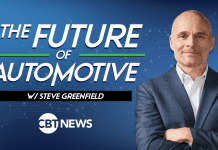The relationship between dealers and OEMs is one of the industry’s most discussed topics. While spats between manufacturing and retail are nothing new, the car business has transformed significantly in the last three years, creating new debates over technology, digitization and electrification. Jeff Rosen is the President and CEO of Rosen Automotive Group, and has been an industry insider since 1983. On this episode of Inside Automotive, he joins host Jim Fitzpatrick to discuss the state of automotive retail, and how OEMs and dealers are working together to tackle mutual challenges in 2023 and beyond.
After multiple years of scarcity, Rosen notes that vehicle shortages are finally coming to an end. Before this happened, car prices were steadily rising as OEMs and dealers sought to sustain their profit margins with less inventory. However, with better availability comes more competitive pricing, and as stock grew margins became more compressed, especially in the last quarter.
Electric vehicles have become a point of conflict for retailers and manufacturers. Last year, Ford released EV rules for its franchisees which drew criticism for their substantial investment requirements. Rosen notes that he has only recently become a licensed Ford dealer, and admits that the automaker’s original presentation was poorly delivered. However, he maintains that OEMs and dealers have to work together in the best interest of the consumer. While the relationship between Ford and its storefronts has already been damaged, both sides can compromise to find a mutually beneficial solution that gives buyers the EVs they want without sacrificing dealership finances.
 |
Relations between dealers and OEMs have also become strained due to the digital revolution in the car buying process. Consumers now expect storefronts to provide online purchases, and as the number of in person buyers decreases, retailers grow more worried that automakers will shift away from a franchise system and implement a direct sales model instead. However, while e-commerce promises to transform the auto industry landscape, Rosen notes that many customers still want to touch, see and test their vehicles before deciding on a model. Furthermore, those who receive excellent care at a business are likely to return in the future. Storefronts are uniquely situated to improve brand loyalty and improve customer retention, benefits which automakers won’t be able to see from digital sales, meaning they are likely here to stay. Thankfully, the industry seems well aware of the advantages franchises provide. “The franchise system is the way to go,” explains Rosen, adding, “and all the OEMs that I deal with have let me know that that’s the way they want to move forward.”
Automotive retail has come further in the last three years than it has in decades, and the future promises to transform the industry even more. However, to successfully navigate this transition, OEMs and dealers will need to communicate and collaborate as much as possible. While their business objectives may be unique, both groups share the common goal of providing the best experience for the customers of today and tomorrow.
Did you enjoy this interview? Please share your thoughts, comments, or questions regarding this topic by connecting with us at newsroom@cbtnews.com.
Be sure to follow us on Facebook, LinkedIn, and TikTok to stay up to date.
While you’re here, don’t forget to subscribe to our email newsletter for all the latest auto industry news from CBT News.







